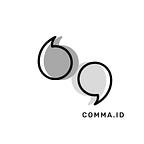Have you ever seen the TV Show Friends? If you haven’t, it’s okay. Everybody has their cup of tea anyways. In summary, it is about 6 friends who experience pretty much every life experience possible. It’s very funny and recommended.
However, what’s so unique about the whole show is that it showcases the concept of human attachment styles very well.
As you are reading this, you might be wondering what attachment styles are. Well, in order to understand what they are, we must first come to understand what the term “attachment” really means.
According to psychologist John Bowlby, he defined attachment is a ‘lasting psychological connectedness between human beings’ (Bowlby, 1969). It is important to note that this emotional connection is created between infants and the primary caregiver. This first bond that you have will have an impact on our future relationships and so how we develop this first bond will either determine how we find, maintain, and end relationships.
When it comes to attachment styles, there are 4 major styles that you need to know. These styles are:
- Secure
- Anxious — preoccupied
- Dismissive — avoidant
- Fearful — avoidant
Now you might be wondering what these styles are and how you can determine which style you are. In that case, let’s dive in and learn about them!
- Secure:
This type of attachment style is associated with sympathetic people and can set good boundaries. People with a secure attachment are more likely to feel safe and content in close relationships. Even though they are comfortable with being on their own, they still excel in building and maintaining close relationships. - Anxious — Preoccupied
People with an anxious attachment style are more than likely to be very needy people. They are often uncertain and possess a lack of self-esteem. Additionally, they want to have an intimate relationship but are unsure if others would reciprocate those same feelings due to their uncertainties. - Dismissive — Avoidant
Adults that have a dismissive-avoidant attachment style are the complete opposite of those who have an anxious-preoccupied attachment style. While the latter desires intimacy, the former tries to avoid building connections with other people. Moreover, folks with this attachment style prioritize independence very highly and so as a result, don’t find much interest in developing relationships with others. - Fearful — Avoidant
This kind of attachment style comes from extreme fear as a result of possible childhood trauma or abuse experienced by a person. Adults that have this type of attachment are more likely to feel like they don’t deserve to be loved. Furthermore, the idea of becoming close with someone else makes them uncomfortable due to them fearing that they might get hurt. To these adults, both relationships and the world can feel daunting.
Since the beginning of time, we humans have been created to live together. This life that we live was never meant to be lived alone but was meant for relationships to be made. Getting to know these attachment styles will help you so much in knowing further what type of person you are and what you need.
Translated by Benayah Sitorus
